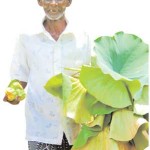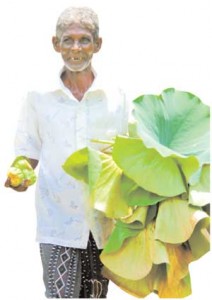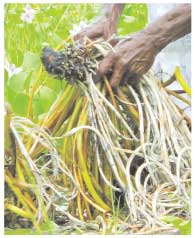– Land of the Lotus Eaters
Arugam Bay Order danazol for endometriosis is the amalgamation of the Tamil word for six – Aru and the Sinhala word for village – gam. Juliet Coombe discovered the area has a lot more on offer than surf, sand and sea, when travelling with 2nd Partner – a tour company with a difference. What is the price of augmentin antibiotics
Arugam Bay is a long way from everything, and in the early years when there was no bridge to the area, this was part of the attraction to the a??reala?? adventure traveller, who discovered this spot of the island in the 1970s. Known for its love gurus, nude bathing and nirvana lifestyle it fast became the spot to surf the waves by day, and the area by night looking for fun times. However, today, this a??Shangri la,a?? tipped to be the next best thing is a rather sad strip of hotels and restaurants that makes Hikkaduwa in comparison look like the South of France. The food is at best terrible, and the only place worth hanging out in is Siam, according to the first film crew, SBS from Australia who have just been filming My Sri Lanka with world famous chef Peter Kurivitas. They are the first crew to go through the area in 30 years and only Siam was worth eating at, where a dude called DJ Nihal calls the shots and the food is the best on the strip. Not really on the surface worth an eight to 10 hour trip from Colombo depending on the weather and traffic conditions.
However step out of this artificial boomtown and discover amazing places like Kudumbigala Monastery (11 miles from Panama), which is the only cylindrical stupa in Sri Lanka. Surrounded by 200 caves in the area that used to be used by monks, they have paintings older than the ones of the girls painted on the Sigriya rock Fortress palace. Appu Hami, a 64-year-old village elder, held in high esteem and the best jungle guide in the area comes from Panama, which dates back as a settlement to 1818. His face is a gnarled as the trees from the jungle, eyes as sharp as a hawka??s, and has a lifetime of stories to tell.
Appu Hami – a legend
in Arugam Bay Appu Hami advocates that before any trek you should eat well from the local indigenous vegetables which include seven different types of yams and two types of Lotus plants which are pulled by the roots from the lakes, famed for their beautiful water lilies. Lotus eating is good for the heart, blood sugar (diabetes) and other things that he says, brings a sparkle to onea??s eyes. It seems women also mix the lotus seeds together and make facial scrubs and the pulled up flowers are used as offerings at the Buddhist temples.
The lakes have always been fished in and this is how the people of the Bay discovered the benefits of the Lotus. Until the 1960s no money exchanged hands, and the community-bartered goods instead, and everyone was much better off. The average wages were only 25 cents and not even worth taking as they had to travel to Tissamaharama to collect them, and so the system of trading one thing for another stuck. It was only when the bridge was built in 1965 and the so called civilized world arrived, did gambling, drinking and prostitution come a??alive.a?? The old man’s eyes become sad as he recounts how in 1977 the surfers arrived and nudity became common on the beaches, drugs became rife whether it was ganja or heroin,A? destroying married life … and the place became a haven for crime. The community started to break down and in his opinion this type of tourism only benefits the rich hoteliers and no one else which is the reason that the area quickly became a one stop shop for cheap travellers and all that this style of travel brings.
Nittawos vanish
The Nittawo – the local pigmy population vanished further into the jungles and the ancient ruins of a civilization older than the ancient Kings also disappeared as old hand cut tracks grew over and only people with jungle knowledge knew where to find the wildlife hot spots. Arugam itself is on the edge of Yala and famed for its jungle honey and Kudumbigala 16 caves complex and temples, which they say even now have buried treasure hidden within the confines of their complex walls.
During the three decades of fighting no one could go anywhere, not even from village to village as he himself was either accused by the army of being with the LTTE, or the guerrillas would take him captive and at best only remove his jungle produce. Everything was a risk and even the national parks were completely off bounds. And so when the tsunami hit Boxing Day 2004, he was amazed to discover in the surrounding sand dunes that the waves which in some places reached between 20 and 50 feet in height not only stopped from destroying the village in that area, but amazingly, also revealed temple complexes and ruins unseen in his life time. The last time a film was made about the area was 35 years ago — on dried fish — and after the bridge was destroyed by the worlda??s worst natural disaster, leaving most of the area under water, life became what it was for a while, going back to the old ways where the community looked after each other.
Nature teaches all Appu Hami says it was a miracle he survived the tsunami and it has taught him that the only type of people he wants to see visiting the area are those who will live with the plants, camp in the jungle and be with the people around the old bush fire exchanging stories and cups of sweet tea. It is in his opinion, the only way to truly enjoy the area and the local cultivation of corn and cashew nuts. Mobile phones, email, computers and other gadgets are making people unbalanced he says and they are cutting people off from what is important – nature – and all it can teach you.
I watched him row off across the lagoon in search of another special spot to show us, and pick some fresh roots to go with the local red rice that we would eat for supper. Interestingly this is the area that the original grains of rice were found and spread across the island due to its properties of keeping people strong when working in the fields. I realized then that this type of elder is not only a true gem and educator who can take you on many types of adventures to the back of beyond. He is also worth his weight in gold.
Somehow, I realized as I drove back to Colombo and vanished into the heart of the night, after eating a variety of bush tucker and curried leaves, just missing elephants meandering across the road, that this type of life needs to be preserved before ita??s too late. After all, he is right – we cana??t eat money and money is not a reason to live life, and if we continue to ignore nature, the tsunami might probably be just the beginning of the end.




 Arugam Forum
Arugam Forum Arugam Photo Galleries on Picasa
Arugam Photo Galleries on Picasa Old Website
Old Website Press Coverage
Press Coverage Surf Forecast for Arugam Bay
Surf Forecast for Arugam Bay
Nice detail post. Especially foreigners would love to eat Lotus, even every one would love to eat if we can increase the awareness of benefits of that.
The little Siam View is of course happy about receiving a positive mention.
Lotus, however, has been on our private menu for years.
Usually it’s not used in cooking here we believe.
You’d love it – just as I do asparagus!